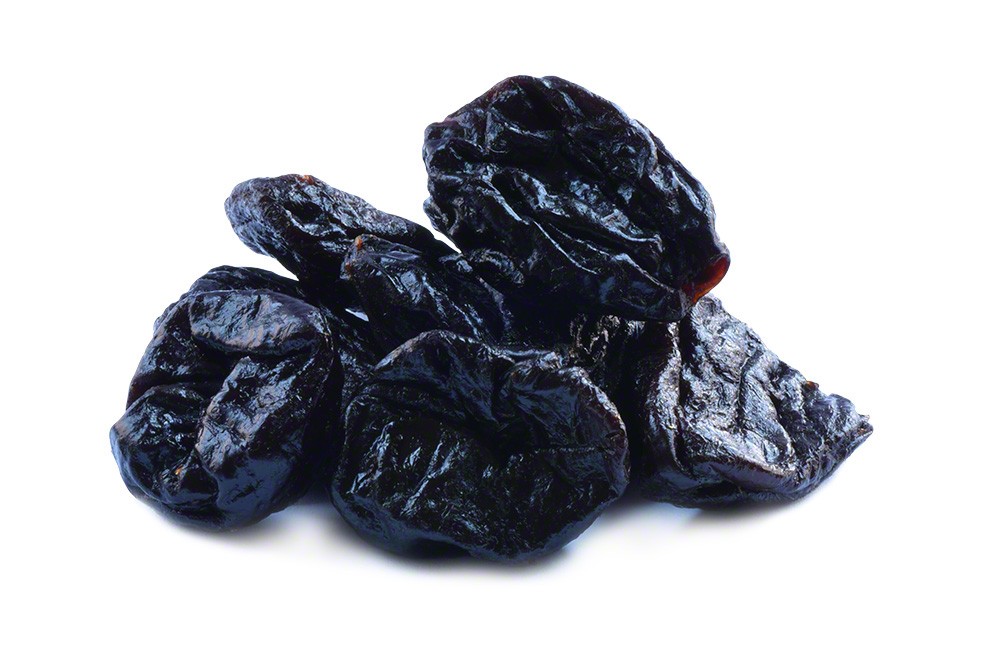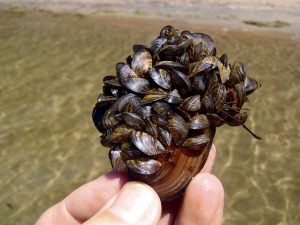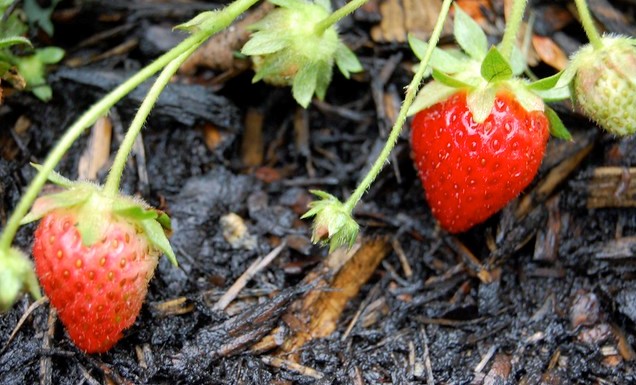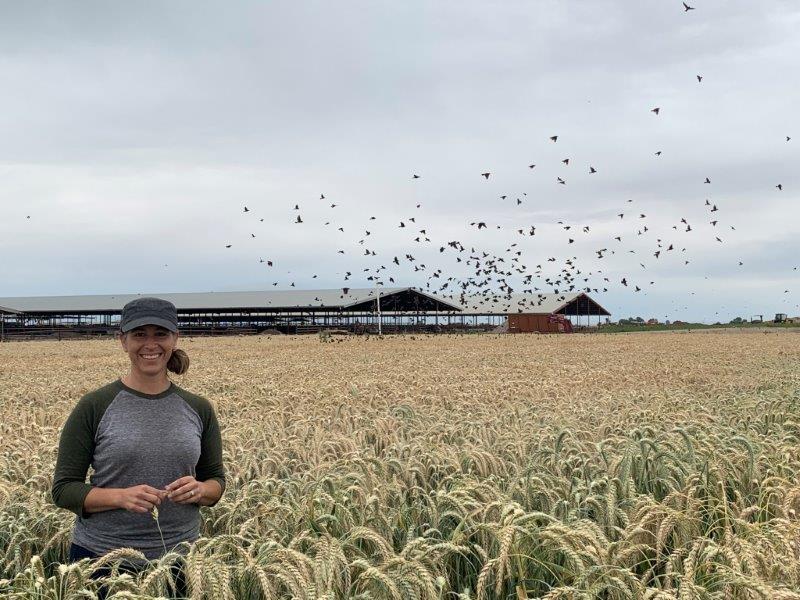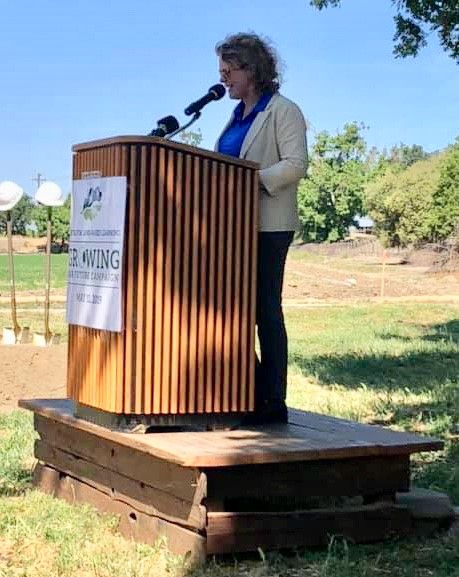By Christine Souza
It’s a “mixed box” when it comes to beekeeper expectations regarding this season’s honey crop. Some beekeepers report that winter weather brought plenty of forage for honeybees to feast on this year, and others say uneven citrus bloom in some areas may affect honey production.
Although no formal statewide honey production figures are expected to be released for a few months, individual beekeepers report that the amount of honey they will extract from bee colonies could be up this year.
“We’re expecting that the honey crop should be significantly better than the last five to seven years at least because of all of the rain,” said Imperial County apiarist Brent Ashurst of Westmoreland, president of the California State Beekeepers Association. “For everyone, the weather has been beneficial because of all of the additional food sources for the bees, and it really makes our job easier because the bees can do what they are supposed to do.”
Beekeepers point out that in recent years, factors such as the ongoing drought and lack of forage, Varroa mites and exposure to crop-protection materials, have taken a toll on the bees, resulting in bee losses for many beekeepers. But the moisture and precipitation this season has led to diverse forage for honeybees, including an abundant mix of plants and wildflowers that bees depend on for quality nutrition.
Ashurst said he does not rely on honey as an income “because it’s feast or famine; there are some years we make a decent amount of honey, and some years we don’t.”
“Where we are located (in Southern California), a good year is 12 pounds of honey per colony. Whereas at a honey-producing area like Montana, they might be getting 120 pounds per colony, so 12 pounds is pretty insignificant,” Ashurst said.
This season, due to the favorable weather, Ashurst has honeybees placed in sage locations in Temecula and Escondido.
“What we’re hoping to get is a sage (honey) crop because finally we got some rain. We don’t know what that crop is going to look like until we take it off in June,” said Ashurst, who added that many beekeepers can sell honey for the wholesale price of $2 a pound, or filter and bottle the honey for farmers market sales and make about $10 a pound.
Stanislaus County beekeeper Orin Johnson of Hughson said “honey production in California has over the years decreased, but this year, we’re looking for a little bump up in honey production for the state.”
For the past few days, Johnson has extracted sage honey, calling the variety “one of the premium honeys in the world.”
“The bees are still in the sage and will probably make another box by the time they come out by June,” Johnson said. “We only make a good sage crop in extremely wet years. This year we had a lot of moisture. It wasn’t as much as 2017, but it came at the right time and the plants are producing.”
With his honeybees placed in sage locations near Hollister and Pinnacles, Johnson recalls beekeepers had large sage honey crops in 2017 and 2010. Johnson sells honey direct to local customers from his warehouse.
“A lot of my customers, other than the family that wants a jar or two, are those interested in selling honey at farmers markets, so they will come with their 5-gallon buckets and purchase direct from me,” Johnson said. “l might have one person come and get a quart jar and another person come get about 30 gallons.”
Many beekeepers have recently moved bees out of the state’s citrus groves near Tulare County and are busy pollinating other crops.
Tulare County beekeeper and citrus grower Roger Everett of Terra Bella Honey Co. said, “We just got done pulling hives from the citrus groves and now we’re trying to get to the next pollination job.”
Transporting honeybee colonies to pollinate watermelons in Kern County, Everett said he likely won’t open a hive to extract citrus honey until late May or early June.
“I don’t know if the hives are all heavy or sort of heavy. I just know there’s a stack of pallets with hives that just came out of the citrus that need to be ran through a machine and we’ll see what we get,” Everett said.
The citrus bloom was hit and miss, Everett said, adding, “Bloom was really weird on the citrus; some fields had heavy bloom and some hardly bloomed at all. That’s how much variation there’s been, at least in Tulare County.”
Related to the orange honey crop, Everett said, “I think it’s going to be a little off again compared to previous years or the expectation over the past few years with the rain we’ve been getting.”
Honey production has been declining in California in recent years, Johnson said, although he said the state is among the top 10 honey-producing states.
“At one time, California was the second- or third-leading honey-producing state in the nation. Production is now about 40-pounds per hive, where before it was closer to 60 pounds a hive,” said Johnson, who noted that changing diversity among irrigated crops has affected honey production.
Beekeepers say that for much of their income, they rely on revenue from pollination, such as from pollinating almonds and other crops.
“Definitely, we’ve got to have the almond pollination income,” Johnson said.
A report on U.S. honey released in February, by the University of California Agricultural Issues Center, found that American appetite for honey is growing. In 2017, Americans consumed 596 million pounds of honey or about 1.82 pounds of honey per person, a 65% increase in consumption since 2009. In addition, the report noted that the U.S. honey sector in 2017 was responsible for more than 22,000 jobs and had total economic output of $4.75 billion.
The state apiary sector will know more about this season’s honey crop in a few months, as the U.S. Department of Agriculture National Agricultural Statistics Service is expected to release its annual honey report for 2018 this week. The report includes information about honey producing colonies, honey-production and price by color class.
Link to story




